A fresh coat of paint can reset a room in a weekend—but colour alone isn’t your only tool. With a few simple techniques, your walls can carry texture, depth, and personality without hiring a pro. Below are easy, DIY-friendly wall paint effects that turn blank surfaces into confident design statements.
Soft Colour Wash
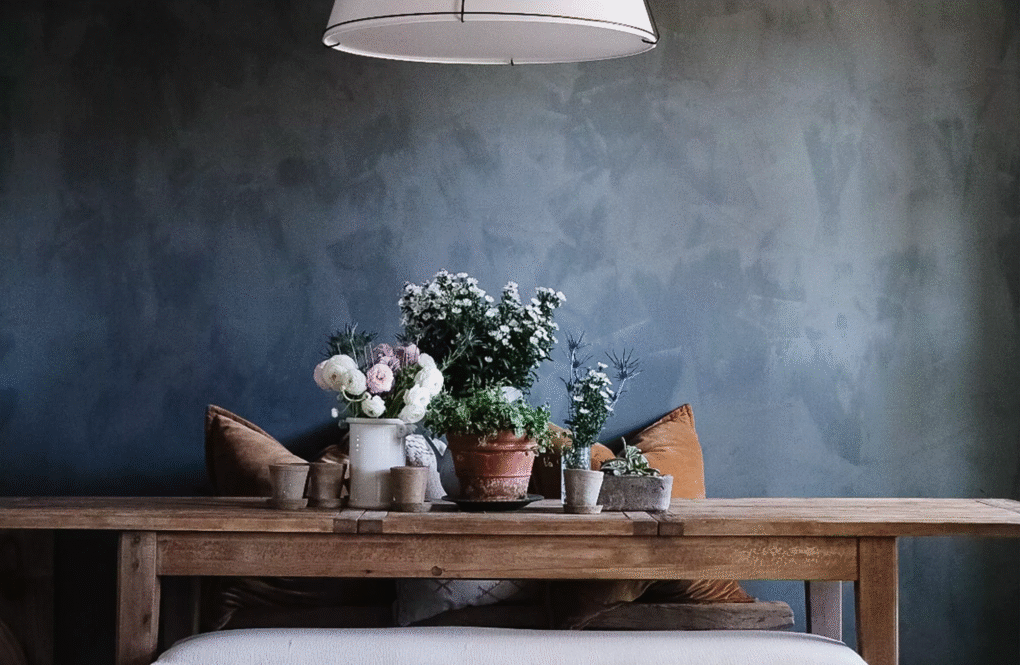
Colour washing layers a translucent tone over a solid base to create a gentle, watercolour-like movement. Roll on your base colour, let it dry fully, then glaze a lighter or darker tint using a lint-free cloth or sea sponge in loose, overlapping strokes. The result is atmospheric and forgiving—perfect for bedrooms and quiet living spaces.
- Keep sheens low (matte/eggshell) so the layered texture reads softly.
- Work in small sections to maintain a wet edge and avoid harsh lap marks.
Ombre Gradient

An ombre wall fades from one shade to another, adding height and drama without busy pattern. Divide the wall into horizontal bands, paint each with a neighbouring shade, then blend the boundaries while the paint is still workable. Neutrals create subtle depth; bolder palettes make a modern statement behind a sofa or headboard.
- Use a clean, dry brush to “feather” the join between bands for a seamless melt.
- Test your gradient on cardboard first to perfect spacing and transitions.
Clean Stripes & Simple Patterns
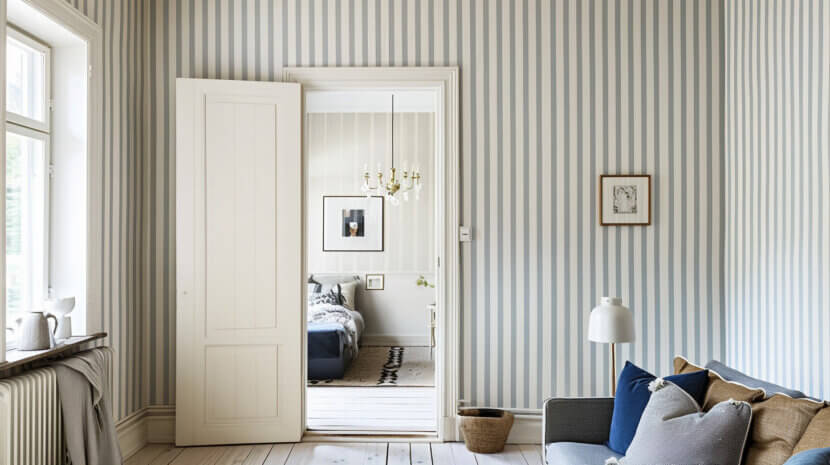
Painter’s tape unlocks crisp geometry with minimal fuss. Try horizontal bands for calm, vertical bands to visually raise a low ceiling, or a single off-centre stripe as a quiet focal line. You can also tape simple chevrons or checker motifs for a tailored, minimalist look.
- Burnish tape edges with a plastic card, then “seal” them by painting the wall colour before the stripe colour—this prevents bleed.
- Vary widths for a contemporary rhythm without feeling like wallpaper.
Stencil Work, Minus the Fuss
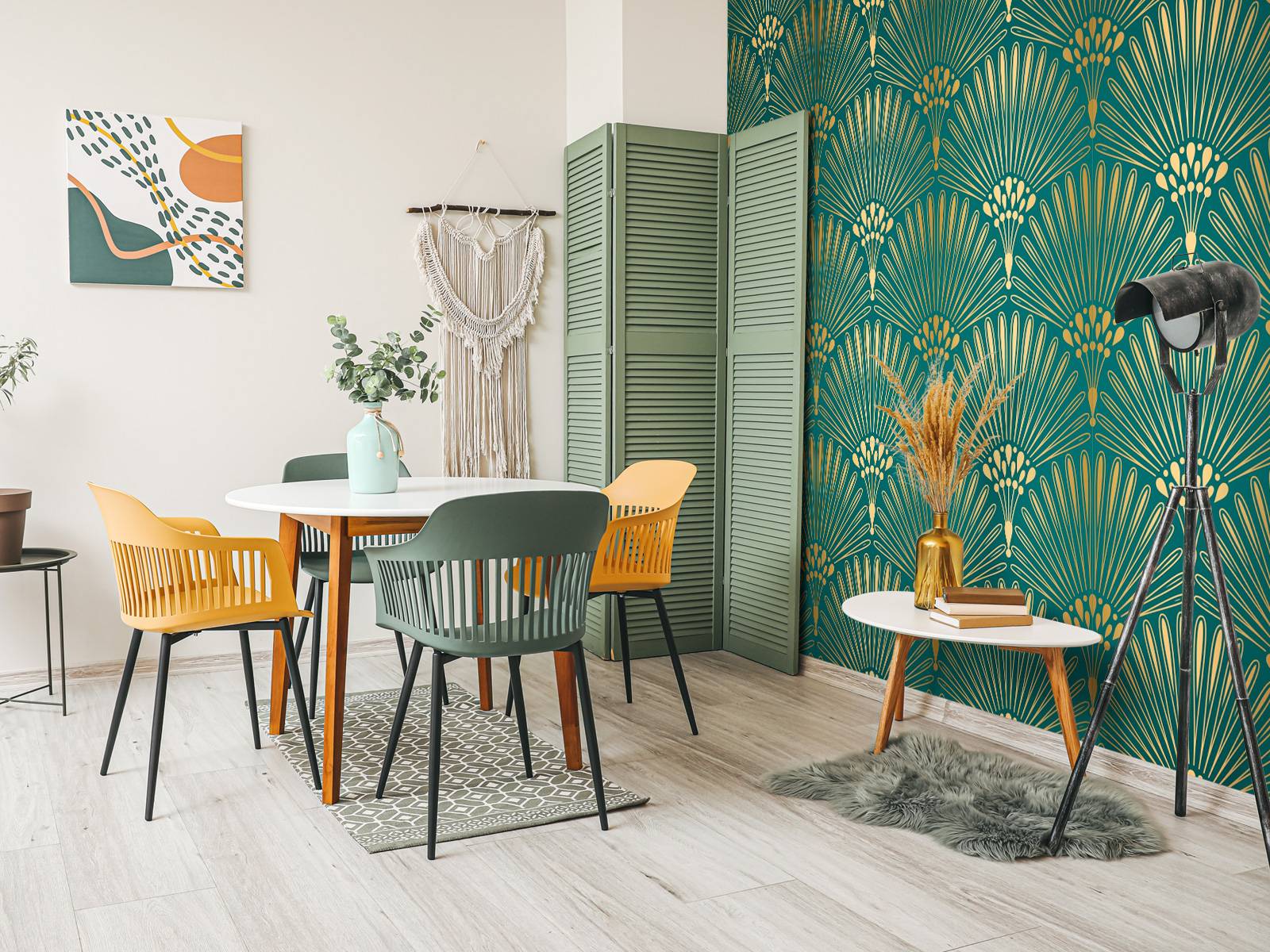
Stencils offer intricate repeats—botanical sprigs, Art Deco fans, micro-geometrics—without freehand skill. Secure the stencil flat, offload excess paint on a paper towel, then tap gently with a stencil brush or sponge. Metallics or a tone-on-tone approach both elevate the effect; the former reads luxe, the latter reads subtle.
- Reposition with registration marks so the pattern stays aligned.
- Use minimal paint to avoid seepage and raised edges.
Faux Natural Textures
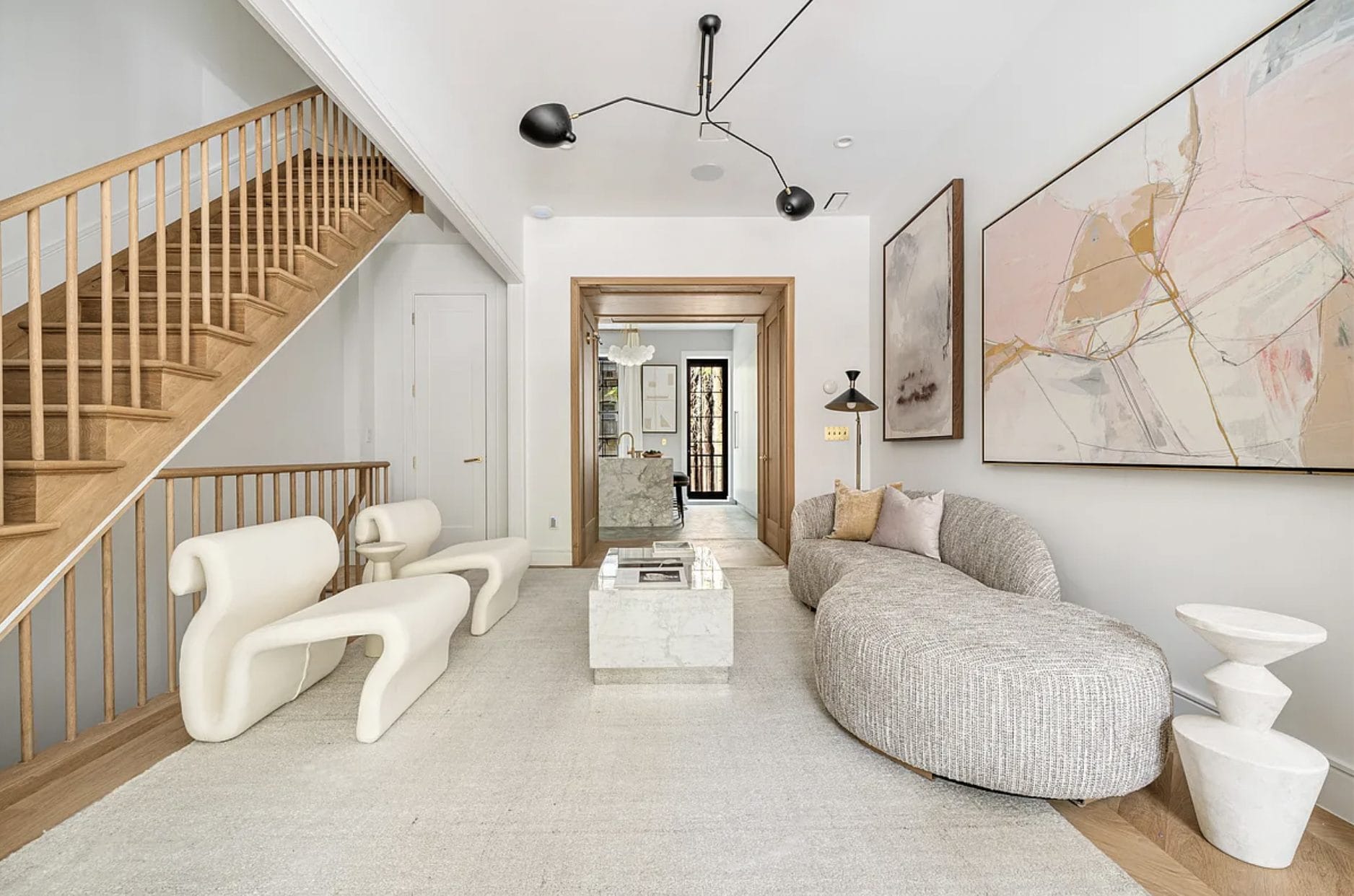
Emulate plaster, stone, or suede using simple tools. For stone: stipple two or three related colours with a sponge, then soften with a dry brush. For suede: roll a base, glaze a similar tone, and cross-hatch lightly with a soft brush. These finishes add warmth and hide minor surface flaws.
- Choose analogous colours (neighbours on the colour wheel) for realistic depth.
- Finish with a flat topcoat to keep the illusion convincing.
Bold Colour Blocking
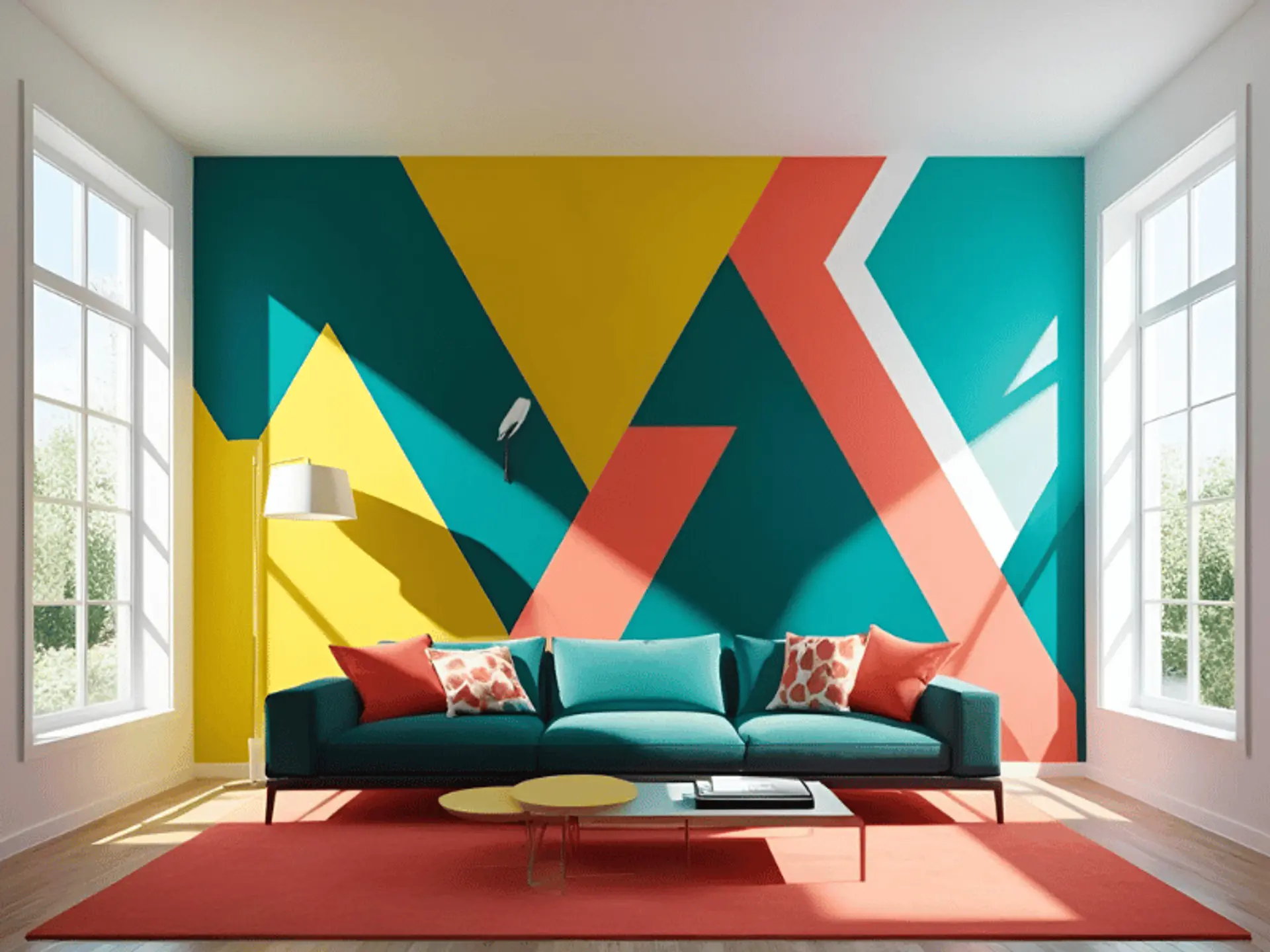
Divide a wall into big geometric shapes—arches, diagonals, offset rectangles—and assign each a coordinated colour. This modern approach adds energy without clutter and can zone an open-plan space: a muted block behind a desk, a grounding rectangle behind a bed, or a playful arch in a kid’s nook.
- Repeat one hue elsewhere (throw, lamp, rug) so the blocks feel integrated.
- Keep edges razor-sharp by removing tape while paint is still slightly wet.
3D Wall Design
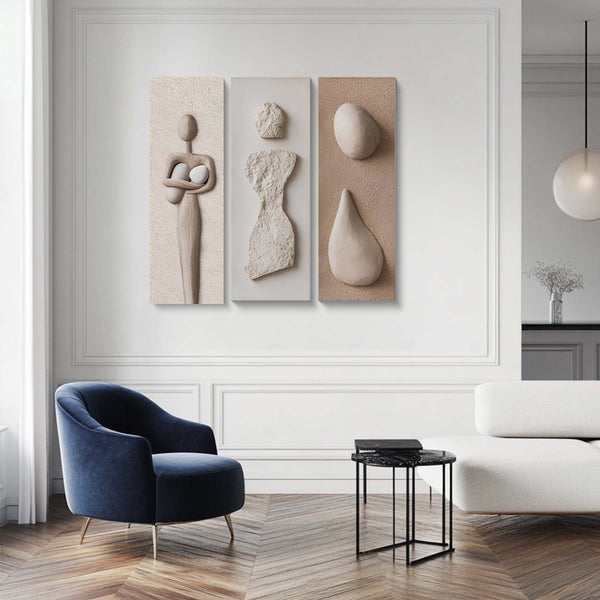
Want sculptural impact without installing panels? Create convincing depth with paint and light. Start by sketching simple shapes—flutes, cubes, arches, pill forms, or raised “frames.” Paint the base in a mid-tone, then add a lighter edge where the imaginary light hits and a deeper shadow on the opposite side. A soft mid-blend between highlight and body colour sells the illusion and makes the form read as three-dimensional.
- Decide on a single light source (top-left or top-right) and keep it consistent across every shape.
- Mix two tints for highlights and two deeper shades for shadows to build realistic gradation.
- Feather the transition with a dry brush; avoid hard lines unless you want a crisp, carved look.
- Use low-sheen finishes so “volume” reads through value, not glare.
- Grazing light from a sconce or LED strip will amplify edges and make the faux relief pop.
For a gallery feel, cluster three to five painted forms and anchor the composition with one large artwork in a complementary palette; size-specific, ready-to-hang options are easy to match at https://tryartwork.com/, so the painted relief and the art read as one curated statement.
Colourful Geometrics for Energy

Multi-tone triangles, diamonds, or angled grids inject optimism into family rooms and creative corners. Keep the palette curated—three or four hues maximum—and repeat each colour at least twice for balance. Use large shapes to avoid a fussy, tile-like effect.
- Map the design with light pencil lines and painter’s tape before opening paint.
- Matte finishes prevent glare and keep the composition unified.
Quick Prep & Pro Finish Tips
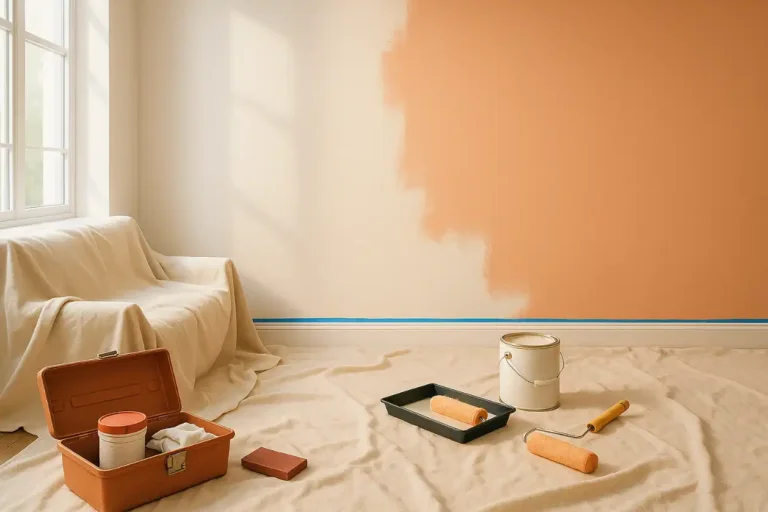
Great paint effects start with simple, methodical prep. Use these quick steps to get an even sheen, clean lines, and a durable, pro-looking finish.
- Fill holes and hairline cracks, sand lightly, and prime all patched areas to equalize sheen.
- Use high-quality rollers/brushes with the right nap for your surface to avoid texture mismatch.
- Keep a damp cloth handy to wipe drips and tidy edges immediately.
- Work in natural daylight when possible for truer colour and flaw detection.
- Evaluate colours under evening/artificial lighting before committing to a second coat.
- Cut in edges first, then roll while the cut line is still wet to avoid picture-framing.
- Label custom mixes and save a small jar for future touch-ups.
Bring Your Walls to Life
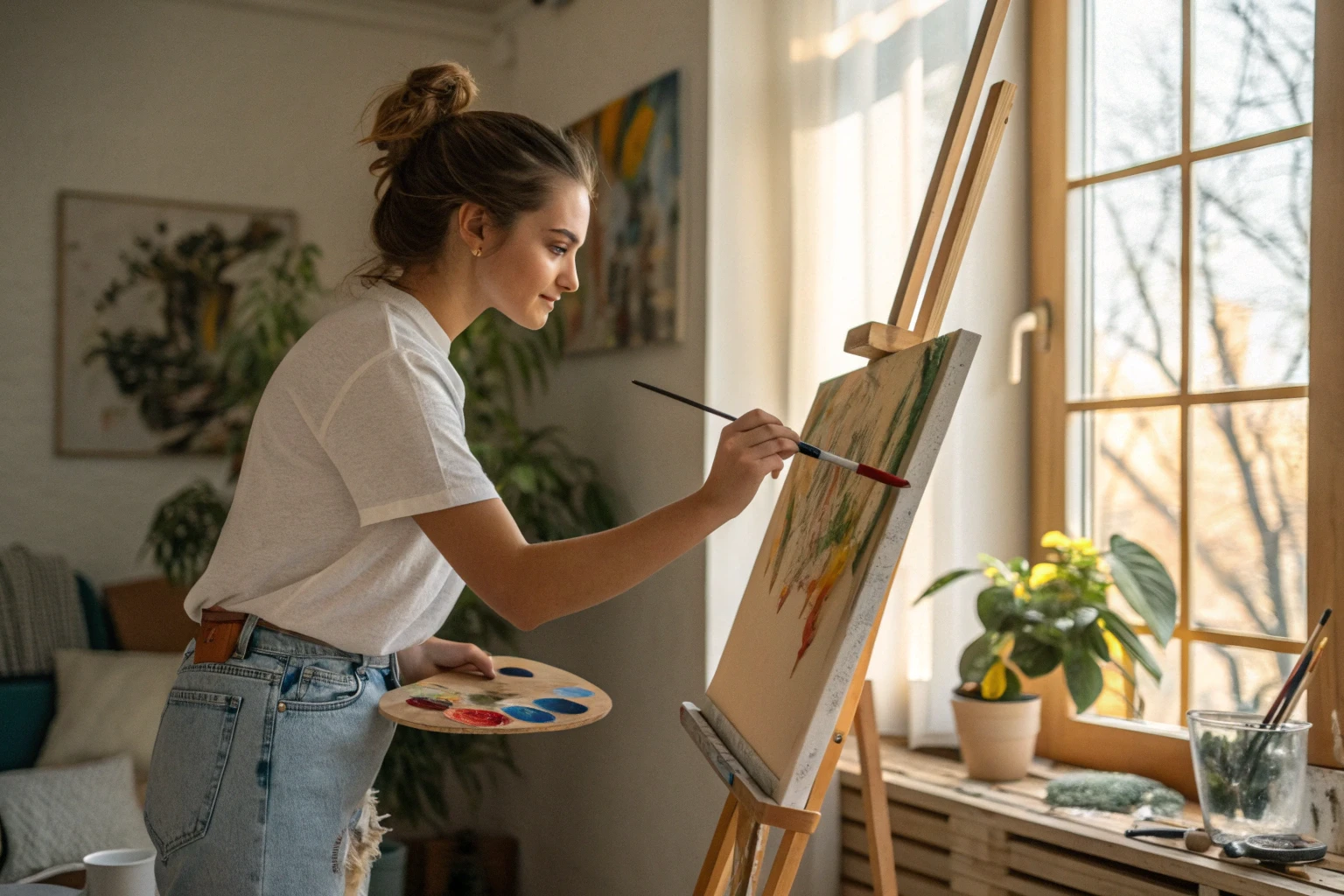
From whisper-soft colour washes to geometric colour blocking, these paint ideas can transform your interior quickly and affordably. You can even complement your painted surfaces with a moss wall, adding natural texture and a biophilic touch that elevates the overall ambiance. Start with one wall, master the technique on a sample board, and build confidence as you go. With a little patience and a steady hand, your home will carry fresh character—and your walls will finally feel as designed as the rest of your space.
